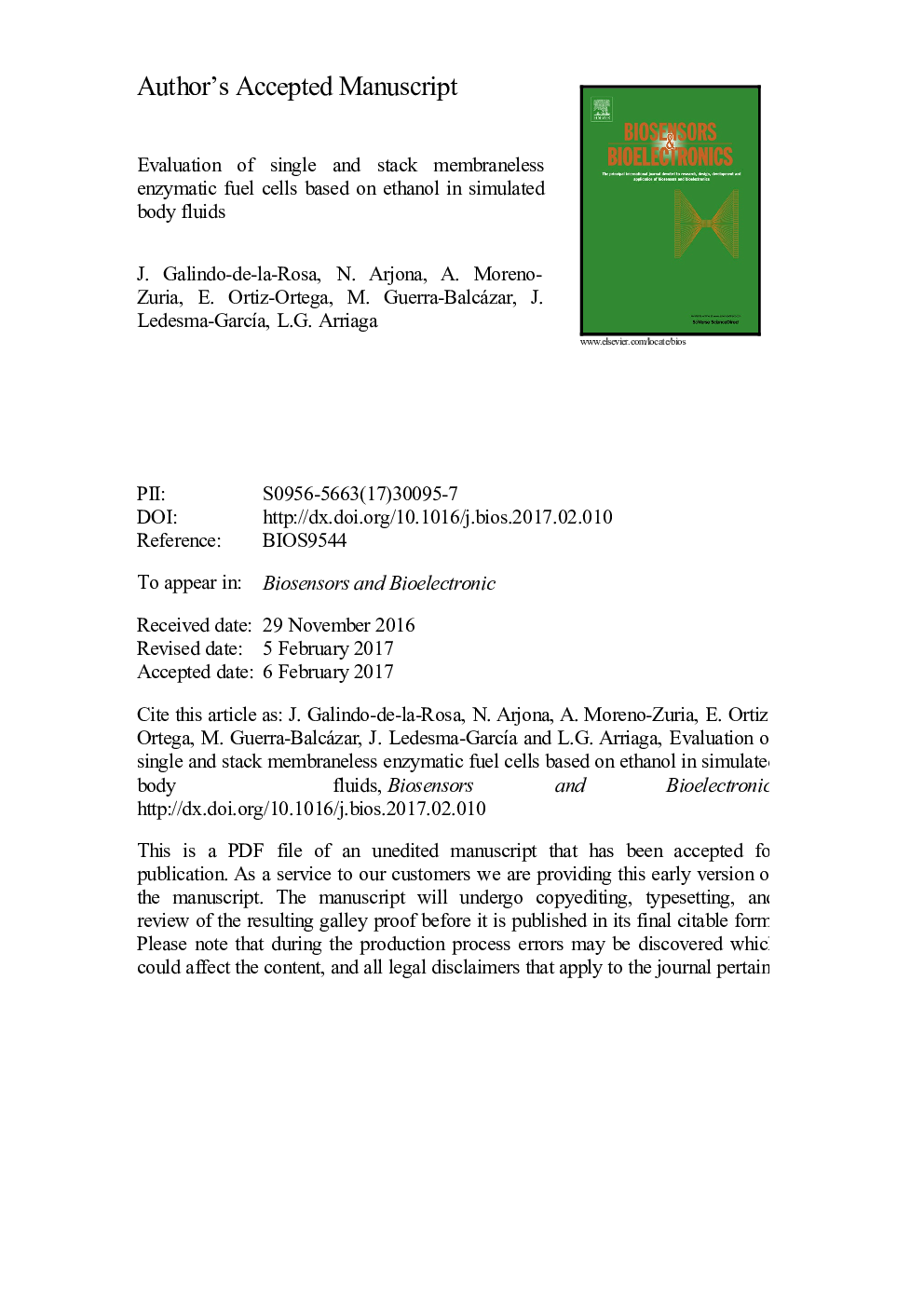| Article ID | Journal | Published Year | Pages | File Type |
|---|---|---|---|---|
| 5031585 | Biosensors and Bioelectronics | 2017 | 36 Pages |
Abstract
The purpose of this work is to evaluate single and double-cell membraneless microfluidic fuel cells (MMFCs) that operate in the presence of simulated body fluids SBF, human serum and blood enriched with ethanol as fuels. The study was performed using the alcohol dehydrogenase enzyme immobilised by covalent binding through an array composed of carbon Toray paper as support and a layer of poly(methylene blue)/tetrabutylammonium bromide/Nafion and glutaraldehyde (3D bioanode electrode). The single MMFC was tested in a hybrid microfluidic fuel cell using Pt/C as the cathode. A cell voltage of 1.035Â V and power density of 3.154Â mWÂ cmâ2 were observed, which is the highest performance reported to date. The stability and durability were tested through chronoamperometry and polarisation/performance curves obtained at different days, which demonstrated a slow decrease in the power density on day 10 (14%) and day 20 (26%). Additionally, the cell was tested for ethanol oxidation in simulated body fluid (SBF) with ionic composition similar to human blood plasma. Those tests resulted in 0.93Â V of cell voltage and a power density close to 1.237Â mWÂ cmâ2. The double cell MMFC (Stack) was tested using serum and human blood enriched with ethanol. The stack operated with blood in a serial connection showed an excellent cell performance (0.716Â mWÂ cmâ2), demonstrating the feasibility of employing human blood as energy source.
Related Topics
Physical Sciences and Engineering
Chemistry
Analytical Chemistry
Authors
J. Galindo-de-la-Rosa, N. Arjona, A. Moreno-Zuria, E. Ortiz-Ortega, M. Guerra-Balcázar, J. Ledesma-GarcÃa, L.G. Arriaga,
